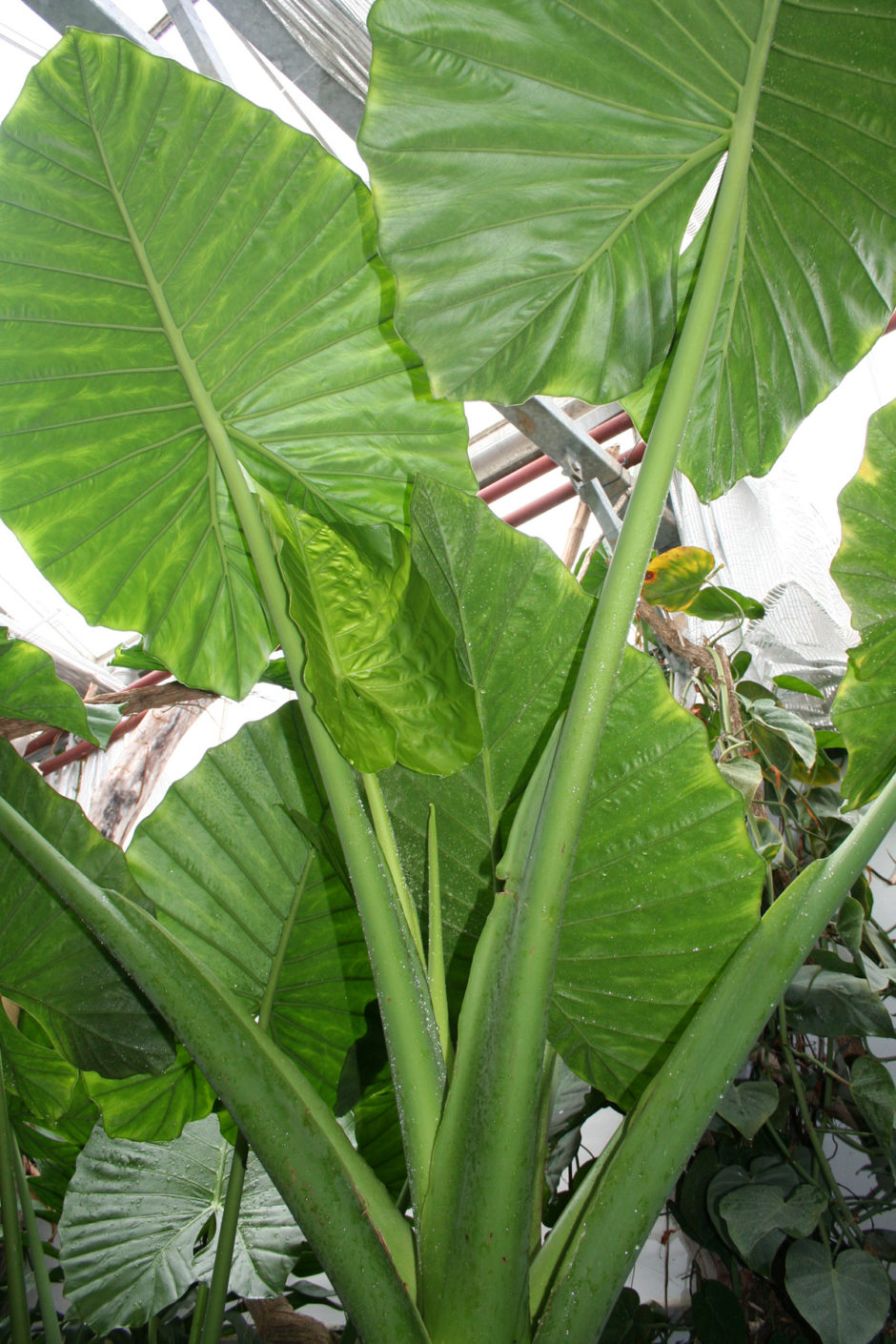Giant taro
Alocasia macrorrhizos

Largest leaf in the world
Giant taro has the largest un-split leaf in the world, reaching two metres long. The giant leaves are ideally adapted to absorbing the small amount of light that reaches the rainforest floor under the dense tree canopy. The leaves are supported by thick stalks over 10 centimetres wide and up to 2 metres long.
Protection against the elements
The large leaves of giant taro may be broken by heavy tropical rain, but it has cleverly adapted to help solve this problem.
All over the leaf surface are tiny bumps coated with wax. The bumps are only five to ten thousandths of a millimetre high, but enough to reduce the surface contact of water droplets and let them roll off the leaf as if beads. A rolling droplet also gathers dirt, cleaning the leaf.
Diet staple
The giant taro is a staple food for over three hundred million people worldwide. Just like our potato, the corm (a swollen stem) is peeled and boiled, and eaten as an important source of carbohydrate.
The giant taro leaves and stems are also eaten as a vegetable rich in vitamins. In the raw state, the giant taro is poisonous to humans if eaten in large quantities, until prolonged boiling removes the toxin calcium oxalate.
Quick facts
| Scientific name Alocasia macrorrhizos | Native to East Australia and Sri Lanka | Rainforest layer Understory |
| Size 2 metre long leaves | Plant family Aroids | IUCN conservation status Not evaluated – learn more |
